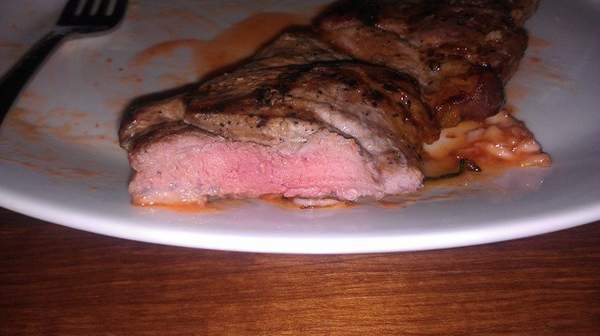What's in this article?
What is Trichinosis?
Trichinosis sometimes called trichinellosis (trik-ih-nuh-LOW-sis), is a type of roundworm infection. Roundworm parasites use a host body to live and reproduce. Occurring primarily among meat-eating animals (carnivores) especially bears, foxes and walruses the infection is acquired by eating roundworm larvae in raw or undercooked meat.
When humans eat undercooked meat containing trichinella larvae, the larvae mature into adult worms in the intestine over several weeks. The adult worms then produce larvae that travel through various tissues, including muscle. Trichinosis is most widespread in rural areas throughout the world.
Trichinosis can be treated with medication, though it’s not always necessary. It’s also easy to prevent.
Trichinosis facts
- Trichinosis is caused by eating raw or undercooked pork and wild game infected with the larvae of a parasitic worm.
- The contaminated meat is infected with the larvae of a worm called Trichinella spiralis.
- The initial symptoms of trichinosis are abdominal discomfort, nausea, diarrhea, vomiting, fatigue, and fever.
- The severity of symptoms depends on the number of infectious worms consumed in the meat.
- Never eat raw or undercooked pork or wild game.
- If you think you may have trichinosis, seek medical attention.
Causes of Trichinosis
Trichinosis is a disease caused by eating meat that has not been thoroughly cooked and contains cysts (larvae, or immature worms) of Trichinella spiralis. Trichinella spiralis can be found in pork, bear, walrus, fox, rat, horse, and lion.
Wild animals, especially carnivores (meat eaters) or omnivores (animals that eat both meat and plants), should be considered possible sources of roundworm disease. Domestic meat animals raised specifically for eating under United States Department of Agriculture (government) guidelines and inspection can be considered safe. For this reason, trichinosis is rare in the United States, but it is a common infection worldwide.
When a person eats meat from an infected animal, Trichinella cysts break open in the intestine and grow into adult roundworms. The roundworms produce other worms that move through the gut wall and into the bloodstream. The worms invade muscle tissues, including the heart and diaphragm (the breathing muscle under the lungs). They can also infect the lungs and brain. The cysts remain alive for years.
Signs and Symptoms of a Trichinellosis Infection
The signs, symptoms, severity and duration of trichinellosis vary. Nausea, diarrhea, vomiting, fatigue, fever, and abdominal discomfort are often the first symptoms of trichinellosis. Headaches, fevers, chills, cough, swelling of the face and eyes, aching joints and muscle pains, itchy skin, diarrhea, or constipation may follow the first symptoms. If the infection is heavy, patients may experience difficulty coordinating movements, and have heart and breathing problems. In severe cases, death can occur.
For mild to moderate infections, most symptoms subside within a few months. Fatigue, weakness, muscle pain, and diarrhea may last for months.
Diagnosis of Trichinosis
Your doctor may be able to diagnose trichinosis by taking your medical history and asking you about your symptoms. They may also perform certain diagnostic tests to determine whether there any larvae present in your system.
Your doctor may take a sample of your blood and test it for signs of trichinosis. Elevated levels of white blood cells and the presence of antibodies against the parasite may indicate a Trichinella infection.
Your doctor may also perform a muscle biopsy if the blood test results are inconclusive. During a muscle biopsy, your doctor will remove a small piece of muscle tissue and analyze it for the presence of Trichinella larvae.
Prevention of Trichinosis
Trichinosis is prevented by thoroughly cooking meats, especially pork and pork products, to a temperature of 160° F (71° C). Alternatively, larvae can usually be killed by freezing meat at -1° F (-17° C) for 3 weeks or at -22° F (-30° C) for 6 days. However, larvae of worms that infect arctic mammals can survive these temperatures. Smoking, salting, or microwave cooking does not reliably kill the larvae.
Also, pigs should not be fed uncooked meat products.
Complications of Trichinosis
Except in severe cases, complications related to trichinosis are rare. In cases of heavy infestation, larvae can migrate to vital organs, causing potentially dangerous, even fatal, complications, including:
- Myocarditis – an inflammation of the myocardium, the thick muscular layer of your heart wall
- Encephalitis – an inflammation of your brain
- Meningitis – an inflammation of the membranes (meninges) and cerebrospinal fluid surrounding your brain and spinal cord
- Pneumonia – an inflammation of your lungs
How is Trichinosis Treated?
Most trichinosis infections have minor symptoms and do not require any treatment as all symptoms resolve without treatment. In those with more intense symptoms, thiabendazole (Mintezol) can be used to eliminate the adult worms in the gastrointestinal tract. Albendazole (Albenza) is another drug that may be used in some cases. The invasive and encysted larva forms of Trichinella species are treated by mebendazole (Vermox). Inflammation of infected tissues is usually treated with prednisone and is frequently used in combination with mebendazole.





